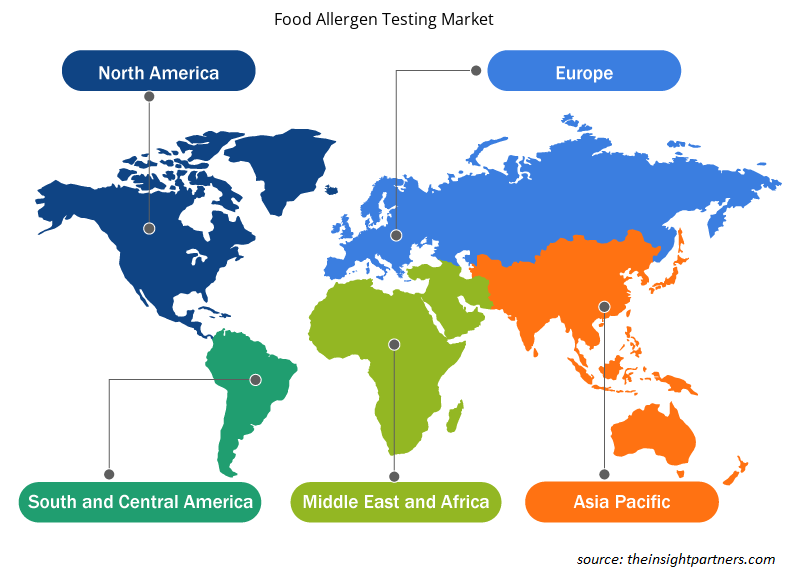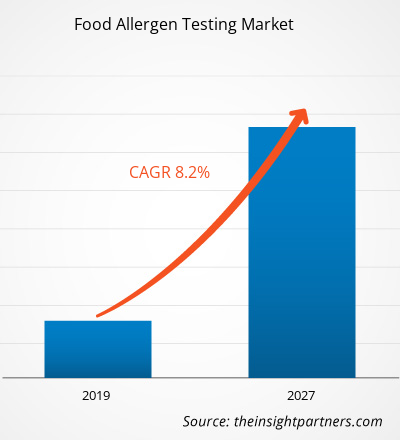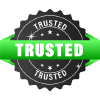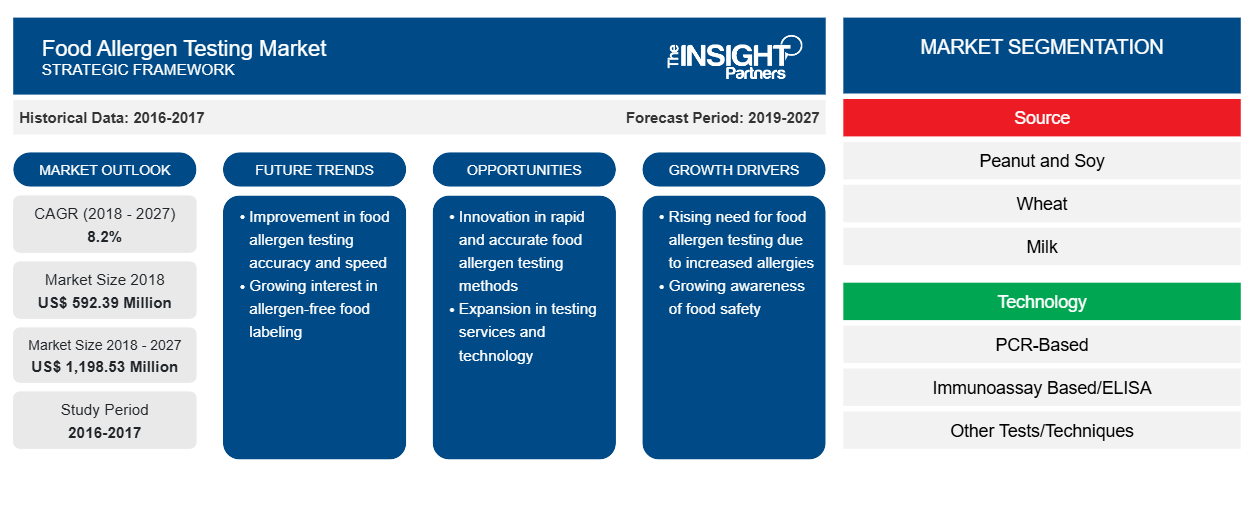食品アレルゲン検査市場は2018年に5億9,239万米ドルと評価され、2027年までに11億9,853万米ドルに達すると予測されており、2019年から2027年にかけて8.2%のCAGRで成長すると予想されています。
食物アレルゲンは、食品や原材料に自然に存在するタンパク質で、異常な免疫反応を引き起こします。これは、人間の免疫システムが食品中のこれらのタンパク質を有害であると誤って認識することで発生します。世界中で報告されている最も一般的な食物アレルゲンには、卵、魚介類、牛乳、ピーナッツ、貝類、大豆、小麦、木の実、ブラジルナッツ、松の実、カシューナッツ、ピスタチオ、クルミなどがあります。食物アレルゲンはアレルギーを持つ人々にとってますます大きなリスクとなるため、食品生産者は食品にアレルゲンが存在する可能性について定期的な検査を行うことが重要です。食物アレルゲン検査は、原材料と最終的な食品製品に不要な食物アレルゲンが含まれていないかどうかを確認するのに役立ちます。食品業界では、食品中のアレルゲンの検出に酵素結合免疫吸着測定法 (ELISA) がよく使用されます。これは簡単で時間のかからない手法であり、さらに、この検査は感度が高く、費用対効果が高く、信頼性が高く、正確であるためです。 ELISA は、牛乳および乳製品、肉および肉製品、魚および魚製品、ナッツ、大豆、ナッツベースの製品、フルーツジュースおよびその成分などに含まれるアレルゲンの検出に効果的に使用されています。
COVID-19パンデミックは2019年12月に武漢(中国)で発生し、それ以来急速に世界中に広がっています。2020年6月現在、米国、ロシア、インド、イタリア、中国、スペイン、フランス、ドイツは、確認された症例数と報告された死亡者数で最も影響を受けた国です。パンデミックは、課せられたロックダウン、渡航禁止、事業閉鎖により、経済や産業に影響を及ぼしています。食品・飲料は、この流行の結果として、サプライチェーンの中断、技術イベントのキャンセル、オフィスの閉鎖などの深刻な混乱に見舞われている世界の主要産業の1つです。COVID-19による世界的な食品アレルゲン検査市場の経済崩壊は、サプライチェーンの障害による工場の閉鎖や生産停止により、食品アレルゲン検査の需要も制限しています。
要件に合わせてレポートをカスタマイズする
このレポートの一部、国レベルの分析、Excelデータパックなど、あらゆるレポートを無料でカスタマイズできます。また、スタートアップや大学向けのお得なオファーや割引もご利用いただけます。
- このレポートの主要な市場動向を入手してください。この無料サンプルには、市場動向から見積もりや予測に至るまでのデータ分析が含まれます。
市場分析
食品および食品原料の国際貿易の拡大
食品・飲料業界の急速な成長と食品および食品原料の国際貿易の増加は、食品アレルゲン検査市場で事業を展開する主要企業に成長の機会を提供します。北米、ヨーロッパ、中東に輸入される食品および食品原料は、品質および表示基準に照らして厳しく検査されます。したがって、これらの地域の国々に製品を輸出する食品・飲料メーカーは、厳格な食品安全および表示規制に従う必要があり、食品アレルゲン検査の必要性がさらに高まります。人口の増加、都市化、購買力の向上、および食生活の嗜好の変化により、世界では食品需要が全体的に増加しています。インド、日本、オーストラリア、ブラジル、メキシコなどの国には確立された食品産業があり、これらの国で生産された食品は主に米国、ドイツ、フランス、サウジアラビア、UAEなどの国に輸出されています。食品生産者は、より大きな利益を得るために、全体的な輸出を増やすことに重点を置いています。乳製品、魚介類、卵、果物、野菜、高級食品、オーガニック食品、肉、加工食品、調味料、シリアルベースの製品など、さまざまな種類の食品や食品原料が世界中に輸出されています。
ソースインサイト
食品アレルゲン検査市場は、ソースに基づいて、ピーナッツと大豆、小麦、牛乳、卵、木の実、魚介類、その他に分類されます。2018年には、牛乳セグメントが市場の最大のシェアを占めました。牛乳セグメントの最大のシェアは、北米、ヨーロッパ、アジア太平洋などの地域で牛乳によって引き起こされる食物アレルギーの発生率が増加していることに主に起因しています。乳糖不耐症は、乳製品に含まれる主要な炭水化物である乳糖を消化できないことによって引き起こされる消化器疾患です。したがって、乳糖不耐症に苦しむ人々は牛乳や乳製品を避けます。牛乳アレルギーは、乳児や幼児に最もよく見られる食物アレルギーです。3歳未満の子供の約2.5%が牛乳アレルギーです。世界中で乳糖不耐症に苦しむ人が増えていることが、牛乳セグメントの食品アレルゲン検査市場の成長を後押ししています。
テクノロジーインサイト
食品アレルゲン検査市場は、技術に基づいて、PCR ベース、免疫測定ベース/ELISA、およびその他の検査/技術に分類されます。ポリメラーゼ連鎖反応 (PCR) は、特定の DNA サンプルを数百万から数十億コピーするために広く使用されている技術で、科学者は DNA の非常に小さなサンプルを採取し、詳細に研究するのに十分な量に増幅することができます。PCR は、1984 年に Cetus Corporation のアメリカ人生化学者 Kary Mullis によって発明されました。これは、古代の DNA サンプルの検査や感染性因子の特定など、遺伝子検査の多くにとって重要です。とりわけ、免疫測定ベース/ELISA は、その高い精度、感度、および標準化の可能性が高いため、アレルゲンの日常的なモニタリングに最も一般的に使用され、人気のある方法です。ELISA は、食品成分、加工食品、調理済み食品、飲料に含まれる低レベルの食品アレルゲンを定量化することを目的としたほとんどの市販キットの主要なプロトコルでもあります。その結果、現場で食品の品質と安全性を評価するために、実験室環境外で使用される分析戦略の需要が高まっています。
食品テストの洞察
ベーカリー製品や菓子、幼児食、加工食品、乳製品や乳製品代替品、魚介類や肉製品などの食品は、アレルギーの原因になりやすいです。さらに、動物飼料の品質低下により、肉が人間にアレルギーを引き起こす可能性が生じます。食品飲料業界では、飼料の品質を改善できる動物飼料添加物の需要が高まっていますが、肉によるアレルギーを軽減するため、食品不耐性検査市場は依然として強い地位を維持しています。
Dicentra、Eurofins Scientific SE、Intertek Group plc、Mérieux NutriSciences、Microbac Laboratories Inc、Neogen Corporation、ALS Limited、Romer Labs Diagnostic Gmbh、SGS SA、UV SUD SPB PTE. LTD.は、世界の食品アレルゲン検査市場における主要企業であり、これらの戦略を実行して顧客基盤を拡大し、大きなシェアを獲得することで、世界的にブランド名を維持しています。
食品アレルゲン検査市場の地域別分析
予測期間を通じて食品アレルゲン検査市場に影響を与える地域的な傾向と要因は、Insight Partners のアナリストによって徹底的に説明されています。このセクションでは、北米、ヨーロッパ、アジア太平洋、中東、アフリカ、南米、中米にわたる食品アレルゲン検査市場のセグメントと地理についても説明します。

- 食品アレルゲン検査市場の地域別データを入手
食品アレルゲン検査市場レポートの範囲
| レポート属性 | 詳細 |
|---|---|
| 2018年の市場規模 | 5億9,239万米ドル |
| 2027年までの市場規模 | 11億9,853万米ドル |
| 世界のCAGR(2018年 - 2027年) | 8.2% |
| 履歴データ | 2016-2017 |
| 予測期間 | 2019-2027 |
| 対象セグメント | ソース別
|
| 対象地域と国 | 北米
|
| 市場リーダーと主要企業プロフィール |
|
市場プレーヤーの密度:ビジネスダイナミクスへの影響を理解する
食品アレルゲン検査市場は、消費者の嗜好の変化、技術の進歩、製品の利点に対する認識の高まりなどの要因により、エンドユーザーの需要が高まり、急速に成長しています。需要が高まるにつれて、企業は提供を拡大し、消費者のニーズを満たすために革新し、新たなトレンドを活用し、市場の成長をさらに促進しています。
市場プレーヤー密度とは、特定の市場または業界内で活動している企業または会社の分布を指します。これは、特定の市場スペースに、その市場規模または総市場価値に対してどれだけの競合相手 (市場プレーヤー) が存在するかを示します。
食品アレルゲン検査市場で事業を展開している主要企業は次のとおりです。
- コマクサ
- ユーロフィンサイエンティフィックSE
- インターテックグループ
- メリューニュートリサイエンス
- マイクロバックラボラトリーズ株式会社
免責事項:上記の企業は、特定の順序でランク付けされていません。

- 食品アレルゲン検査市場のトップキープレーヤーの概要を入手
世界の食品アレルゲン検査市場 – 出典別
- ピーナッツと大豆
- 小麦
- 牛乳
- 卵
- 木の実
- シーフード
- その他
世界の食品アレルゲン検査市場 – 技術別
- PCRベース
- 免疫測定法/ELISA
- その他のテスト/テクニック
世界の食品アレルゲン検査市場 – Food Tested社
- パン・菓子
- 幼児食
- 加工食品
- 乳製品と代替品
- 魚介類および肉製品
- その他の食品
企業プロフィール
- コマクサ
- ユーロフィンサイエンティフィックSE
- インターテックグループ
- メリュー ニュートリサイエンス
- マイクロバックラボラトリーズ株式会社
- ネオジェン株式会社
- ALSリミテッド
- ロマーラボ診断有限会社
- SGS SA
- UV SUD SPB PTE. 株式会社
よくある質問
The growth of the milk segment is primarily attributed to the increasing incidence of food allergens caused due to milk in the developed and developing regions such as North America, Europe, and the Asia Pacific. Food allergy to cow’s milk is the most common food allergy in infants and young children. About 2.5% of children under three years old are allergic to milk. Additionally, an increasing number of people suffering from lactose intolerance across the globe is boosting the growth of the food allergen testing market.
The major players operating in the globalfood allergen testing market areDicentra, Eurofins Scientific SE, Intertek Group Plc, Mérieux NutriSciences, Microbac Laboratories Inc., Neogen Corporation, ALS Limited, Romer Labs Diagnostic Gmbh, SGS S.A., TUV SUD SPB PTE. LTD., and R-Biopharm AG, among others.
In 2018,the food allergen testing marketwas predominantinNorth Americaat theglobal level.An increasing number of food allergy incidences in the US and Canada and stringent labeling regulations pertaining to food allergen are the key factors boosting the growth of the food allergen testing market in North America.
- 過去2年間の分析、基準年、CAGRによる予測(7年間)
- PEST分析とSWOT分析
- 市場規模価値/数量 - 世界、地域、国
- 業界と競争環境
- Excel データセット
お客様の声
購入理由
- 情報に基づいた意思決定
- 市場動向の理解
- 競合分析
- 新興市場の特定
- 顧客インサイト
- 市場予測
- リスク軽減
- 業務効率の向上
- 戦略計画
- 投資の正当性
- 業界イノベーションの追跡
- 規制動向への対応
はい!レポートの範囲(目次)、レポートの構成、そしてレポート全体の価値を評価するのに役立つ厳選されたインサイトを含む、レポートの無料サンプルをご提供しています。 「サンプルをダウンロード」ボタンをクリックするか、お問い合わせの上、サンプルをお送りください。
はい、アナリストによるサポートはパッケージに含まれています。ご購入後、アナリストにご連絡いただき、レポートの洞察や手法についてご説明したり、調査結果がお客様のビジネスニーズにどのように当てはまるかご相談いただけます。
ご注文が完了すると、確認メールと請求書が届きます。
• 公開済みレポートの場合:4~6営業時間以内に、セキュリティ保護されたメールがお客様のメールアドレスに送信されます。
• 近日公開予定レポートの場合:ご注文は事前予約として記録されます。リリース予定日については、担当チームからご連絡し、最新情報をお知らせいたします。レポートが公開され次第、ご登録いただいたメールアドレスに配信いたします。
お客様の特定の目的に合わせてレポートをカスタマイズするためのオプションをご用意しております。特定の地域、業界セグメント、競合他社の分析、データカットなど、より深い洞察が必要な場合でも、当社のリサーチチームがそれに応じてレポートをカスタマイズいたします。ご要望をお聞かせください。お客様に合わせたご提案やスコープを喜んでご提供いたします。
レポートは、選択したライセンスに応じて、PDF形式またはExcelデータセットで提供されます。
PDF版では、完全な分析とビジュアルがすぐに読める形式で提供されます。Excelデータセットには、すべてのデータテーブルが含まれており、簡単に操作して詳細な分析を行うことができます。
ご購入時にライセンスオプションをご確認ください。または、ご購入に含まれる形式を確認するには、お問い合わせください。
当社の決済プロセスは完全に安全で、PCI-DSSに準拠しています。
当社は、すべての取引が業界標準のSSL暗号化で保護されるよう、信頼性の高い暗号化された決済ゲートウェイを使用しています。お支払い情報は当社のサーバーに保存されることはありません。認定されたサードパーティの決済代行業者によって安全に処理されます。
お客様の個人情報と財務情報は当社で安全に保管されますので、安心してご購入いただけます。
はい、まとめ買いの場合は特別価格をご用意しております。
複数のレポートをご購入いただく場合は、お客様のニーズに合わせてカスタマイズされたバンドルオファーまたは数量ベースの割引をご提供いたします。ご検討中のレポートのリストを弊社の営業チームまでお送りください。お客様に合わせたお見積もりをお送りいたします。
はい、もちろんです。
弊社のチームが、お客様が十分な情報に基づいて意思決定できるようお手伝いいたします。レポートの範囲、方法論、カスタマイズオプション、最適なライセンスなど、ご質問がございましたら、お気軽にお問い合わせください。 sales@theinsightpartners.com までご連絡ください。担当者が速やかにご連絡いたします。
はい、ご購入が完了すると請求書が自動的に生成され、ご登録いただいたメールアドレスに送信されます。
特定の形式で請求書が必要な場合や、追加情報(会社名、GST、VAT情報など)が必要な場合は、お気軽にお問い合わせください。喜んでご対応させていただきます。
はい、もちろんです。
レポートへのアクセスや受信に問題が発生した場合は、サポートチームがサポートいたします。ご注文情報を添えて、メールまたはライブチャットでお問い合わせください。問題を迅速に解決し、お客様が中断することなくレポートにアクセスできるようお手伝いいたします。















The List of Companies - Global Food Allergen Testing Market
- Dicentra
- Eurofins Scientific SE
- Intertek Group plc
- MérieuxNutriSciences
- Microbac Laboratories Inc
- Neogen Corporation
- ALS Limited
- Romer Labs Diagnostic Gmbh
- SGS S.A.
- UV SUD SPB PTE. LTD.



The Insight Partners performs research in 4 major stages: Data Collection & Secondary Research, Primary Research, Data Analysis and Data Triangulation & Final Review.
- Data Collection and Secondary Research:
As a market research and consulting firm operating from a decade, we have published and advised several client across the globe. First step for any study will start with an assessment of currently available data and insights from existing reports. Further, historical and current market information is collected from Investor Presentations, Annual Reports, SEC Filings, etc., and other information related to company’s performance and market positioning are gathered from Paid Databases (Factiva, Hoovers, and Reuters) and various other publications available in public domain.
Several associations trade associates, technical forums, institutes, societies and organization are accessed to gain technical as well as market related insights through their publications such as research papers, blogs and press releases related to the studies are referred to get cues about the market. Further, white papers, journals, magazines, and other news articles published in last 3 years are scrutinized and analyzed to understand the current market trends.
- Primary Research:
The primarily interview analysis comprise of data obtained from industry participants interview and answers to survey questions gathered by in-house primary team.
For primary research, interviews are conducted with industry experts/CEOs/Marketing Managers/VPs/Subject Matter Experts from both demand and supply side to get a 360-degree view of the market. The primary team conducts several interviews based on the complexity of the markets to understand the various market trends and dynamics which makes research more credible and precise.
A typical research interview fulfils the following functions:
- Provides first-hand information on the market size, market trends, growth trends, competitive landscape, and outlook
- Validates and strengthens in-house secondary research findings
- Develops the analysis team’s expertise and market understanding
Primary research involves email interactions and telephone interviews for each market, category, segment, and sub-segment across geographies. The participants who typically take part in such a process include, but are not limited to:
- Industry participants: VPs, business development managers, market intelligence managers and national sales managers
- Outside experts: Valuation experts, research analysts and key opinion leaders specializing in the electronics and semiconductor industry.
Below is the breakup of our primary respondents by company, designation, and region:

Once we receive the confirmation from primary research sources or primary respondents, we finalize the base year market estimation and forecast the data as per the macroeconomic and microeconomic factors assessed during data collection.
- Data Analysis:
Once data is validated through both secondary as well as primary respondents, we finalize the market estimations by hypothesis formulation and factor analysis at regional and country level.
- Macro-Economic Factor Analysis:
We analyse macroeconomic indicators such the gross domestic product (GDP), increase in the demand for goods and services across industries, technological advancement, regional economic growth, governmental policies, the influence of COVID-19, PEST analysis, and other aspects. This analysis aids in setting benchmarks for various nations/regions and approximating market splits. Additionally, the general trend of the aforementioned components aid in determining the market's development possibilities.
- Country Level Data:
Various factors that are especially aligned to the country are taken into account to determine the market size for a certain area and country, including the presence of vendors, such as headquarters and offices, the country's GDP, demand patterns, and industry growth. To comprehend the market dynamics for the nation, a number of growth variables, inhibitors, application areas, and current market trends are researched. The aforementioned elements aid in determining the country's overall market's growth potential.
- Company Profile:
The “Table of Contents” is formulated by listing and analyzing more than 25 - 30 companies operating in the market ecosystem across geographies. However, we profile only 10 companies as a standard practice in our syndicate reports. These 10 companies comprise leading, emerging, and regional players. Nonetheless, our analysis is not restricted to the 10 listed companies, we also analyze other companies present in the market to develop a holistic view and understand the prevailing trends. The “Company Profiles” section in the report covers key facts, business description, products & services, financial information, SWOT analysis, and key developments. The financial information presented is extracted from the annual reports and official documents of the publicly listed companies. Upon collecting the information for the sections of respective companies, we verify them via various primary sources and then compile the data in respective company profiles. The company level information helps us in deriving the base number as well as in forecasting the market size.
- Developing Base Number:
Aggregation of sales statistics (2020-2022) and macro-economic factor, and other secondary and primary research insights are utilized to arrive at base number and related market shares for 2022. The data gaps are identified in this step and relevant market data is analyzed, collected from paid primary interviews or databases. On finalizing the base year market size, forecasts are developed on the basis of macro-economic, industry and market growth factors and company level analysis.
- Data Triangulation and Final Review:
The market findings and base year market size calculations are validated from supply as well as demand side. Demand side validations are based on macro-economic factor analysis and benchmarks for respective regions and countries. In case of supply side validations, revenues of major companies are estimated (in case not available) based on industry benchmark, approximate number of employees, product portfolio, and primary interviews revenues are gathered. Further revenue from target product/service segment is assessed to avoid overshooting of market statistics. In case of heavy deviations between supply and demand side values, all thes steps are repeated to achieve synchronization.
We follow an iterative model, wherein we share our research findings with Subject Matter Experts (SME’s) and Key Opinion Leaders (KOLs) until consensus view of the market is not formulated – this model negates any drastic deviation in the opinions of experts. Only validated and universally acceptable research findings are quoted in our reports.
We have important check points that we use to validate our research findings – which we call – data triangulation, where we validate the information, we generate from secondary sources with primary interviews and then we re-validate with our internal data bases and Subject matter experts. This comprehensive model enables us to deliver high quality, reliable data in shortest possible time.




 このレポートの無料サンプルを入手する
このレポートの無料サンプルを入手する